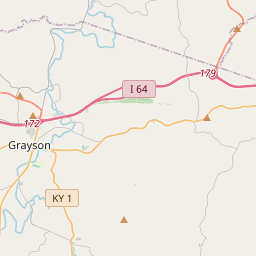Amanda Furnace







When built, 1963, by Armco Steel Corp., rated as the ideal blast furnace, with a hearth diameter of 301/2 ft., daily capacity of 3340 tons of iron. Set American record of 110,515 tons in March, 1966. Rebuilt, in 1968, to produce 4020 tons daily with 331/2 ft. hearth. Named for pioneer furnace a mile west. See other side. Marker presented by Armco Steel Corp.
(Reverse) Iron Made in Kentucky - A major producer since 1791, Ky. ranked 3rd in US in 1830s, 11th in 1965. Charcoal timber, native ore, limestone supplied material for numerous furnaces making pig iron, utensils, munitions in the Hanging Rock, Red River, Between Rivers, Rolling Fork, Green River Regions. Old charcoal furnace era ended by depletion of ore and timber and the growth of railroads
Kentucky was the site of many important battles during the American Civil War, including the Battle of Perryville, which was the largest battle fought in the state.
The county was officially established on December 24, 1860, and was named after Linn Boyd, a politician from Kentucky. Like many areas in Appalachia, Boyd County was predominantly rural and agriculturally focused in its early years. The fertile soil and abundant natural resources attracted settlers, who established small communities and farms throughout the area.
The discovery of natural gas and oil in the late 1800s brought significant economic growth to Boyd County. Companies like the Ashland Oil and Refining Company, now known as Marathon Petroleum Corporation, flourished, attracting workers from far and wide. This led to the expansion of towns like Ashland, the county seat, which became an important transportation and industrial center.
Throughout the 20th century, Boyd County continued to thrive and diversify its economy. The construction of the Bluegrass Army Depot during World War II brought jobs and stability to the region. In recent decades, the county has embraced tourism, with attractions like the Highlands Museum and Discovery Center and the Paramount Arts Center drawing visitors from across the state.
Today, Boyd County remains a vibrant and dynamic community, blending its rich history with a focus on education, healthcare, and industry. The county is known for its strong sense of community, natural beauty, and commitment to preserving its heritage while embracing the future.
Boyd County Timeline
This timeline provides a glimpse into the major events and milestones that have shaped the history of Boyd County, Kentucky.
- 1860 - Boyd County is established as a county in Kentucky
- 1872 - Ashland, the county seat of Boyd County, is officially incorporated as a city
- 1879 - The Chesapeake and Ohio Railway is completed through Boyd County, boosting the local economy
- 1899 - The Ashland Iron & Mining Company is founded, becoming a significant employer in the region
- 1937 - Famed country music singer and songwriter, Billy Ray Cyrus, is born in Flatwoods, Boyd County
- 1954 - The Ashland Oil Refinery is established, becoming one of the region's largest employers
- 1968 - The Ohio River flood devastates Boyd County and surrounding areas
- 1992 - The Paramount Arts Center, a historic theater in Ashland, celebrates its centennial anniversary